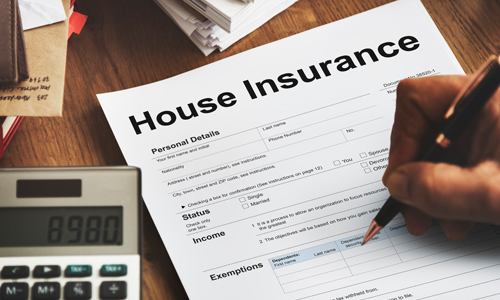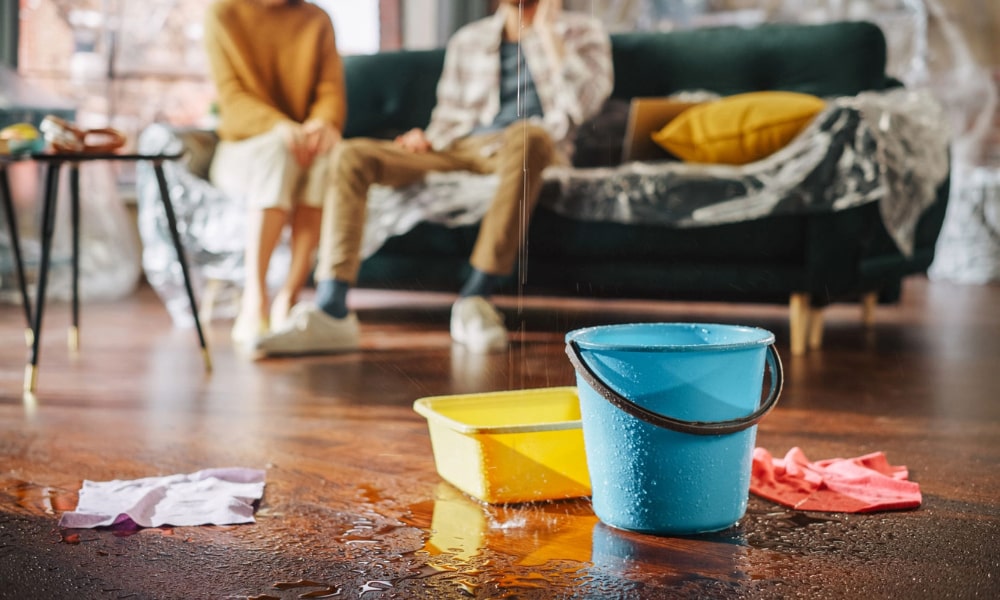Sum Insured in Home Insurance
Suppose you have just bought your dream home in Dubai. You have spent your savings, decorated it the way you wanted and finally moved in with your family. One day, a fire breaks out due to an electrical fault, damaging your home and destroying your furniture and other belongings.

- Instant Issuance
- Personalised Expert advice
- Guaranteed Low prices
Home Insurance starting at AED 33/day
You feel relieved knowing you have home insurance, but when you file a claim, you realise your sum insured is too low. The insurance will not cover all your losses and you now have to pay a huge amount from your pocket.
This is why choosing the right sum insured for your policy is so important. Many people do not know how it works and they often choose the wrong amount. Some think it is based on the market price of their home, while others forget to include their belongings.
In simple terms, the sum insured is the maximum amount your insurance provider will pay if your home or its contents are damaged or lost due to events covered by your policy, such as fire, theft or natural disasters. This amount should reflect the cost to rebuild your home and replace your belongings, so that you are adequately protected.
In the UAE, it's essential to base your sum insured on the reinstatement value—the cost to rebuild your property to its original state—not its market value. Market value includes land costs and market fluctuations, which don't affect rebuilding expenses. Additionally, make sure that high-value items are adequately covered, as some policies may impose sub-limits on valuables. Regularly reviewing and updating your sum insured is advisable, especially after significant purchases or home improvements, to maintain adequate coverage.
Choosing the correct sum insured confirms that, in the unfortunate event of a loss, you have sufficient coverage to restore your home and replace your possessions without incurring significant out-of-pocket expenses.
How Does Sum Insured in Home Insurance Policy Work?
When you set the sum insured, you're defining the limit of your insurance coverage. If a covered event occurs, your insurer will compensate you up to this limit. Accurately assessing this amount is important to avoid underinsurance, which could leave you responsible for a portion of the repair or replacement costs.
Understand how sum insured in home insurance works in real-life situations:
Imagine you have insured your home in Dubai and the sum insured for your property is AED 1,500,000. This includes AED 1,000,000 for rebuilding the house and AED 500,000 for your personal belongings, such as furniture, electronics and other valuable items.
One day, due to an unexpected fire, your home is severely damaged and most of your belongings are destroyed. Since you have a home insurance policy, you decide to file a claim to recover the losses.
Here is how the process works-
- Assessment and Coverage: When you submit your claim, your insurer will assess the damage and determine the cost of repairs or rebuilding
- Coverage limit: If the total damage is estimated at AED 1,200,000, which includes both structural repairs and replacement of your belongings, your insurance company will cover the full amount because it falls within your sum insured limit of AED 1,500,000
- However, if the total damage exceeds your sum insured, say the total loss amounts to AED 1,700,000, your insurer will only pay up to AED 1,500,000, and you would need to cover the remaining AED 200,000 yourself
This is why it is important to ensure your sum insured accurately reflects the real cost of rebuilding your home and replacing your belongings. If you underestimate the value, you might end up paying a large portion of the expenses out of pocket. On the other hand, if you overestimate the sum insured, you may end up paying higher premiums unnecessarily
How Do You Select the Sum Insured for Your Home Insurance Policy?
Selecting the appropriate sum insured for your home insurance policy provides adequate coverage in the event of unforeseen circumstances.
Here are five key factors to consider —
- Rebuilding Costs: Determine the current cost to rebuild your home from scratch, considering materials, labour and any unique architectural features. Make sure that, in case of total destruction, your insurance will cover the full reconstruction expenses.
- Contents Valuation: Assess the value of your personal belongings, including furniture, electronics, clothing and other valuables. Accurate valuation helps you to replace these items if they are damaged or stolen.
- Inflation Consideration: Account for inflation, as construction and replacement costs can rise over time. Thus, it is wise to review this periodically.
- Geographical Risks: Evaluate the risks associated with your home's location, such as susceptibility to natural disasters or high crime rates. Homes in high-risk areas may require higher coverage levels to mitigate potential risks.
- Policy Exclusions and Limits: Carefully read your policy's terms and conditions to understand any exclusions or limitations. Confirm that the sum insured aligns with these provisions to avoid unexpected out-of-pocket expenses during a claim.
Example
Imagine you own a villa in Dubai and you need to determine an appropriate sum insured for your home insurance policy. To do this effectively, consider the following —
- Rebuilding Costs: Calculate the current cost to reconstruct your villa, including materials and labor. For instance, if rebuilding would cost AED 1,500,000, this amount should be reflected in your sum insured.
- Contents Valuation: Assess the value of your personal belongings—furniture, electronics, clothing, etc. If replacing these items would cost AED 500,000, add this to your sum insured.
In this scenario, your total sum insured would be AED 2,000,000. If a covered event leads to a total loss, your insurer would compensate you up to this amount. The amount will help you to rebuild your home and replace your possessions without incurring out-of-pocket expenses.
Frequently Asked Questions (FAQs)
The Single Article Limit (SAL) refers to the maximum amount an insurer will pay for a single valuable item in the event of a claim. This limit varies between insurers and applies to both contents and personal belongings cover.
For instance, if your insurer's SAL for personal belongings is AED 10,000 and you own a watch worth AED 18,000 that isn't listed in your policy, your insurance would only cover AED 10,000 at the time of a claim. It's advisable to list and provide descriptions for items exceeding your insurer's SAL for full coverage.
Valuing your home's contents and personal belongings involves assessing the total current value of all items you own inside your home. This means calculating the cost of replacing your home contents if they were all lost in an incident like a fire.
For personal belongings, it's similar; base the sum insured on the total current value, i.e., the cost of replacing your items classified as 'personal belongings'. For items that appreciate, like jewellery, it's highly recommended to have them valued annually to get the right value.
Most insurance companies require you to list or specify items above a certain value limit. This specified limit varies between insurers and applies to both contents and personal belongings cover. It's only if the value of a single item exceeds this amount that you're advised to list it and provide a description.
Yes, you can still insure your home and belongings without these documents upon signing up. However, receipts or invoices serve as 'proof of value' and are very important as supporting documents at the time of a claim.
It's advisable to keep an inventory of your contents and personal belongings, update valuation letters or certificates and even keep photographs that can be safeguarded to support a claim.
The excess, also known as a deductible, is the amount that is shouldered by the insured and is applicable for each and every claim. It is not an amount that will be paid upfront for a valid claim but rather the amount that will be deducted from the total claim amount payable.
For example, if your policy has an excess of AED 1,000 and you make a claim for AED 10,000, the insurer will pay AED 9,000 after deducting the excess.
More From Home Insurance
- Recent Articles
- Popular Articles















